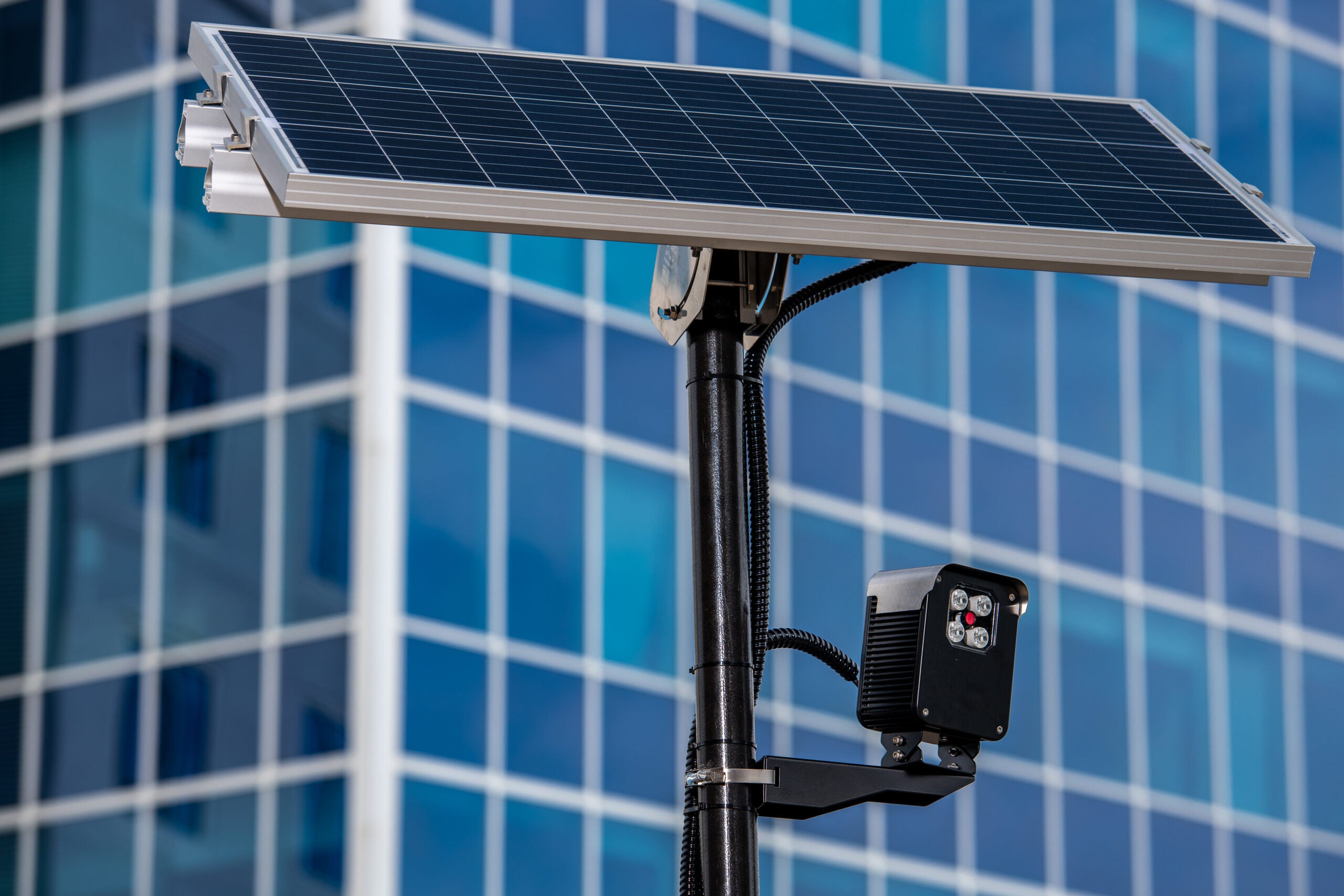
ALPR camera systems help to solve and deter a range of vehicle-related crimes, with tens of thousands of readers currently deployed across the US acting as extra eyes for law enforcement. Vehicle-mounted or stationary license plate readers capture images automatically as vehicles drive by. Software instantly translates these images into text and compares results against a constantly updated ‘hotlist’ of suspect plates. This can provide police and security officers with real-time alerts if a match is identified, helping them locate missing persons, stolen vehicles, and wanted individuals.
While the technology isn’t new, it is definitely advancing. Many modern-day ALPRs can capture almost 2,000 plates per minute, even at speeds up to 160 miles per hour. The systems incorporate high-resolution digital cameras, sophisticated optical character recognition software, and infrared illumination.
Ideal for city streets, solar powered versions of stationary ALPR systems are compact and economical. Completely autonomous with their own power source (complete with battery back-up), these units can expand the range of traditional fixed units and are designed to be placed roadside within a community, communicating in real-time with its assigned server. Such systems are sustainable and scalable, and can be deployed almost anywhere to provide a security net, monitor traffic flow, or assist community safety initiatives.
Rapid and reliable data processing
Once ALPR is in play, the analysis and management of the data is a vital element to running the system efficiently and effectively. Combining ALPR camera systems with state-of-the-art technical back-up such as the latest data management systems aids in solving crime and closing investigations faster.
By using a cloud storage solution, agencies can outsource IT worries and allow staff to focus on their investigations and traffic monitoring instead. Ensuring that the vendor uses a Criminal Justice Information Services (CJIS) policy-compliant server system also means that end users retain ownership and control of their data while meeting jurisdictional storage and sharing policies.
Using advanced software, information from ALPR reads can be quickly collated and processed, enabling hotlist matches to be rapidly distributed out to operatives that need that information quickly, such as those in the field. Data from both stationary and mobile units can be analyzed to give detailed reports, and data can also be used for further analysis and mapping, aiding in investigations. Additionally, archived ALPR data can reveal patterns of activity associated with criminal events, often enabling analysts to predict future crimes and their locations.
An integrated ALPR camera system for complete coverage
Leading ALPR camera company Leonardo has been successfully using its technology to aid law enforcement for over 20 years. Providing fixed, mobile, and custom ALPR solutions, Leonardo offers “force-multiplying” efficiencies for vehicle-related issues, such as traffic management, school safety, finding missing persons, infrastructure security, investigations, homeland security, tolling, parking management, and more.
Jason Laquatra, executive vice president of Leonardo, says: “As the world changes, so do we. Our ever-growing ecosystem of license plate sensors and the most robust ALPR data management software in the industry includes a variety of options—including mobile, fixed, solar-powered, and custom solutions that withstand the test of time. The best part? They all work seamlessly with each other to create a safety net in your community.”
Leonardo recommends its ELSAG® Street Sentry solar-powered ALPR as ideal for city and neighborhood streets. The system used the powerful optical character recognition engine that law enforcement has relied on for decades, with the benefits of advanced OCR capabilities. Featuring a high-quality, purpose-built camera, the device also has a secure housing, and a solar panel designed to withstand all weathers.
Its flexible data management and storage options allow uploads to an existing server system. Alternatively, Street Sentry can be easily configured to work with Leonardo’s own data management options. Both fixed and mobile ELSAG ALPR units can upload data directly to the cloud-based ELSAG Enterprise Operations Center data management system.
For those who choose not to maintain their own server, the ELSAG Cloud Storage Solution (ECSS), powered by Amazon Web Services, manages the cloud-based server, providing assistance with the IT responsibilities and costs associated with server management. ECSS allows end users to retain complete ownership and control of their data with the flexibility to meet sharing and jurisdictional policies.
Evolving ALPR technology
The technology behind ALPR cameras is evolving fast, and Leonardo is at the forefront of this change. Leonardo believes every agency, regardless of size, deserves to harness the power of ALPR technologies to help keep their communities safe.
While the technology may be getting more advanced, Leonardo is committed to ensuring its solutions remain affordable. The company offers a range of financing options so that the latest technology is accessible to every agency, with options to purchase upfront, finance over multiple years, or even subscribe annually. Leonardo has also partnered with PoliceGrantsHelp to provide free grant research assistance.
Whether it involves cloud storage, data management systems, or the very latest solar powered units, Leonardo continually advances its ALPR solutions to make them more affordable while keeping the tech rugged, accurate, and reliable.


